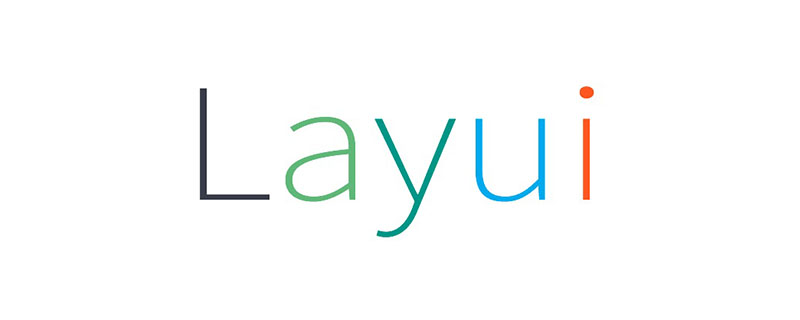Introduction to some underlying methods of LayUI
 Layui modular page usage
Layui modular page usage
Load modules as needed
//引入js,css文件跳过,看文档
//在页面中,如同编写JavaScript一样
<script>
layui.use(['layer','form'],function(){//需要加载的模块
var layer = layui.layer,
form = layui.form;//初始化模块变量
layer.msg('Hi!');//调用该模块的方法
})
</script>Load all modules at once
<script>
;!function(){
var layer = layui.layer
,form = layui.form;//初始化模块变量
layer.msg('Hello World');
}();
</script>Self-written module
//js文件
layui.define(['layer'],function(exports){//自写模块需要调用的layui模块
var layer = layui.layer;//初始化模块变量
layer.msg('Hi!');
exports('index',{})//导出自写模块,index为导出名,use的时候名字要和导出一致
})
//use时注意需要设定模块所在目录
<script>
layui.config({
base:'/res/js/modules/' //自建模块所在目录
}).use('index',function(){//加载入口
});
</script>Local storage operation
layui.data('test',//test表名
{//对象
key:'user_name',//键值对
value:'用户1'
}
)
//删除
layui。data('test',{
key:'user_name',//需要删除的键
remove:true//删除
})
//查
var local = layui.data('test');
console.info(local.user_name);
//根据删除的方法,我暂时认为,如果需要插入多个键值对,需要使用对象数组,而删除多个键值对,则未知了,因为没实际操作,因为本地存储其实不怎么会用这个,接入后端后大多用session或者redisVarious underlying methods that may not be used in practice
layui.device()//获取设备信息 layui.cache()//获得缓存 layui.extend(options)//拓展别名,给一个模块设置别名 layui.each(obj,fn)//对象(array,object,dom)遍历,可取代for layui.getStyle(node,name) //获得dom节点的style属性值,如document.body,'font-size' layui.img(url,callback,error)//图片预加载,可设置加载失败显示默认图从而避免图片加载失败没图的尴尬 layui.router()//获得路由 layui.hint()//向控制台输出异常,目前只能error,layui.hint().error('error') layui.stope(e)//阻止事件冒泡 layui.onevent(modName,events,callback)//自定义模块事件 layui.event(modName,events,params)//执行自定义事件 layui.factory(modName)//获取模块定义时的回调函数
For more layui knowledge, please pay attention layui usage tutorial column.
The above is the detailed content of Introduction to some underlying methods of LayUI. For more information, please follow other related articles on the PHP Chinese website!

Hot AI Tools

Undresser.AI Undress
AI-powered app for creating realistic nude photos

AI Clothes Remover
Online AI tool for removing clothes from photos.

Undress AI Tool
Undress images for free

Clothoff.io
AI clothes remover

Video Face Swap
Swap faces in any video effortlessly with our completely free AI face swap tool!

Hot Article

Hot Tools

Notepad++7.3.1
Easy-to-use and free code editor

SublimeText3 Chinese version
Chinese version, very easy to use

Zend Studio 13.0.1
Powerful PHP integrated development environment

Dreamweaver CS6
Visual web development tools

SublimeText3 Mac version
God-level code editing software (SublimeText3)

Hot Topics
 1386
1386
 52
52
 How to set up jump on layui login page
Apr 04, 2024 am 03:12 AM
How to set up jump on layui login page
Apr 04, 2024 am 03:12 AM
Layui login page jump setting steps: Add jump code: Add judgment in the login form submit button click event, and jump to the specified page through window.location.href after successful login. Modify the form configuration: add a hidden input field to the form element of lay-filter="login", with the name "redirect" and the value being the target page address.
 How to get form data in layui
Apr 04, 2024 am 03:39 AM
How to get form data in layui
Apr 04, 2024 am 03:39 AM
layui provides a variety of methods for obtaining form data, including directly obtaining all field data of the form, obtaining the value of a single form element, using the formAPI.getVal() method to obtain the specified field value, serializing the form data and using it as an AJAX request parameter, and listening Form submission event gets data.
 How to transfer data in layui
Apr 26, 2024 am 03:39 AM
How to transfer data in layui
Apr 26, 2024 am 03:39 AM
The method of using layui to transmit data is as follows: Use Ajax: Create the request object, set the request parameters (URL, method, data), and process the response. Use built-in methods: Simplify data transfer using built-in methods such as $.post, $.get, $.postJSON, or $.getJSON.
 What is the difference between layui and vue?
Apr 04, 2024 am 03:54 AM
What is the difference between layui and vue?
Apr 04, 2024 am 03:54 AM
The difference between layui and Vue is mainly reflected in functions and concerns. Layui focuses on rapid development of UI elements and provides prefabricated components to simplify page construction; Vue is a full-stack framework that focuses on data binding, component development and state management, and is more suitable for building complex applications. Layui is easy to learn and suitable for quickly building pages; Vue has a steep learning curve but helps build scalable and easy-to-maintain applications. Depending on the project needs and developer skill level, the appropriate framework can be selected.
 How layui implements self-adaptation
Apr 26, 2024 am 03:00 AM
How layui implements self-adaptation
Apr 26, 2024 am 03:00 AM
Adaptive layout can be achieved by using the responsive layout function of the layui framework. The steps include: referencing the layui framework. Define an adaptive layout container and set the layui-container class. Use responsive breakpoints (xs/sm/md/lg) to hide elements under specific breakpoints. Specify element width using the grid system (layui-col-). Create spacing via offset (layui-offset-). Use responsive utilities (layui-invisible/show/block/inline) to control the visibility of elements and how they appear.
 How to run layui
Apr 04, 2024 am 03:42 AM
How to run layui
Apr 04, 2024 am 03:42 AM
To run layui, perform the following steps: 1. Import layui script; 2. Initialize layui; 3. Use layui components; 4. Import layui styles (optional); 5. Ensure script compatibility and pay attention to other considerations. With these steps, you can build web applications using the power of layui.
 What language is layui framework?
Apr 04, 2024 am 04:39 AM
What language is layui framework?
Apr 04, 2024 am 04:39 AM
The layui framework is a JavaScript-based front-end framework that provides a set of easy-to-use UI components and tools to help developers quickly build responsive web applications. Its features include: modular, lightweight, responsive, and has complete documentation and community support. layui is widely used in the development of management backend systems, e-commerce websites, and mobile applications. The advantages are quick start-up, improved efficiency, and easy maintenance. The disadvantages are poor customization and slow technology updates.
 What does layui mean?
Apr 04, 2024 am 04:33 AM
What does layui mean?
Apr 04, 2024 am 04:33 AM
layui is a front-end UI framework that provides a wealth of UI components, tools and functions to help developers quickly build modern, responsive and interactive web applications. Its features include: flexible and lightweight, modular design, rich components, Powerful tools and easy customization. It is widely used in the development of various web applications, including management systems, e-commerce platforms, content management systems, social networks and mobile applications.




